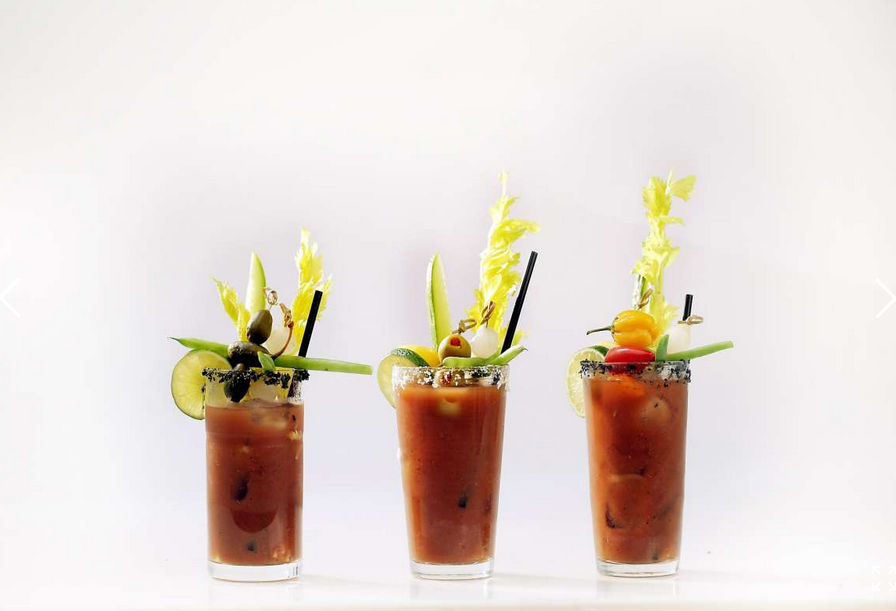Originally published in San Francisco Chronicle
Change beckons each January. It’s a fresh start, a chance to turn things around from what might have been a less-than-stellar year (good riddance, 2016!). With overindulgence of holiday sweets and spirits fresh in our minds and bodies, many gravitate to new ways of eating, whether it’s simply cutting out alcohol or chocolate or committing to the latest cleanse craze.
“It’s a good time to recalibrate,” says Mo Clancy, who has spent more than a decade researching food and nutrition as a way to heal from her own health issues. The founder of Seed + Salt, a San Francisco restaurant dedicated to clean eating, prescribes to just that: an organic diet free of refined or processed foods, gluten and GMOs, animal products and anything inflammatory.
“When I talk about clean, I don’t think everyone needs to be vegan,” says Clancy. “But if you are eating meat, it’s about making sure you’re eating hormone-free, grass-fed and locally farmed meat that is as sustainable as possible.”
Eliminating refined sugars and processed foods has been touted for years in many forms, including the more recent Whole30 program, which garnered more than 2 million posts on Instagram, and Alejandro Junger’s Goop-approved Clean Program, which delivered a detox plan that most people could stomach.
After giving birth to her first child, Christina Ramos signed on for Junger’s plan as a way to help her turn back the clock on her waistline and also manage her postpartum depression. Junger’s Clean Program offers up a “clean” shake for breakfast and dinner plus a solid lunch — including no soy, dairy, gluten, caffeine or alcohol — for 21 days. “I learned so much about my gut, where we manufacture serotonin, and how our mood depends on what we eat,” says the San Francisco native who now lives in Washington, D.C. “I don’t know whether it was just a placebo effect but I do know that the cleanse made my mind clear about my needs, emotional and physical.”.
Modern detox plans are an attempt to make the process more accessible to more people — an antidote to the extreme Master Cleanse that had people fasting, in most cases miserably, on lemon juice and cayenne pepper. “They’re all just iterations of what is referred to as the elimination diet, which is as old as the hills,” says Karyn Duggan, a chef and San Francisco certified nutrition consultant who works for One Medical.
“It all goes back to giving the body what it really needs to function, which is more vegetables, a little healthy protein and fat, and more water.” The elimination diet rules out the eight foods (including milk, eggs, nuts, wheat, soy and shellfish) that cause 90 percent of all food allergies, plus refined sugars and processed foods, before kicking off a re-introduction phase that helps determine the culprits of a person’s ailments.
While it’s the job of the liver to naturally rid your body of toxins, many wonder whether a detox diet is crucial to feeling well or just a wellness fad. Consuming whole foods like leafy greens, apples, beets, carrots — foods that we should naturally be eating versus processed foods — can, in fact, aid the liver’s process of detoxification. “The more we can optimize whatever we consume, the better,” says Duggan. It’s just knowing what that optimal is for your body. “The fact that there is such knowledge these days about detoxification is a really positive thing,” Duggan says. “The problem is with so many iterations of a detox it can get confusing.”
Take juicing, for example. There are more juice bars than you can shake a celery stick at, but buyers beware: Many green juice manufacturers add fruit to sweeten the deal. “Fiber is what keeps us out of trouble, and we don’t have any of that in a juice,” Duggan says. Moderation is key: “When someone picks up a green juice, I give them brownie points because the intention is good, and it is typically a better choice than a candy bar. But it could have as much as 20 grams of sugar.” To avoid misreading the labels, which can cause part of the confusion, Duggan suggests dividing the sugar grams by four to know how many teaspoons you’re getting in a bottle of juice.
No one detox diet fits all. “Personalized nutrition is paramount,” Duggan says. Someone who has a thyroid problem, for example, and who takes the general advice to eat more vegetables may overeat kale. “But kale in excess could actually interfere with thyroid function,” she says. Fasting can also work well for some and not others. “Fasting can create more physiological stressors for someone with adrenal issues,” Duggan adds.
The bottom line? Talk to your doctor before you take on a cleanse.
And how do you keep up the good work beyond January? “Be realistic about what you can do,” says Clancy. “It has taken me 10 years to get to the point (of how) I’m eating now. Pick one thing at a time to eliminate, or pick one day a week to start where you’re eating completely clean, or do it for a week and see how your body feels.” A couple years after her 21-day detox, Ramos continues to not eat for the 12 hours between her last meal of the day and first meal of the next — so a short-term detox can also set good habits for the long term.
“Food is literally information. Every time we sit down to eat anything, we’re programming ourselves to feel and function in a specific way,” Duggan says. “An elimination diet enhances your awareness of food’s influence on your body. It’s almost like being able to see out of a window you didn’t even know existed before,” she adds, “and then, wow, it’s a different perspective. Everyone should try an elimination diet at some point in their lives; it’s never too late.”
Karyn Duggan’s top 5 tips to eating better
1. Skip the eight recommended glasses of water a day and instead calculate this: Halve your ideal body weight in pounds, then drink that number of ounces of water each day (a 150-pound person would aim for 75 ounces of water per day): “Hydrating yourself helps distribute micronutrients to the cells and keeps you feeling full all day long.” she says.
2. Fill half of your plate with vegetables: “Colorful, leafy greens and crunchy vegetables provide essential micronutrients for optimal cell function and antioxidants to help keep your heart healthy.” says Duggan.
3. Choose lean proteins (preferably organic and pasture-raised) and quality fats like avocado and nuts — these should make up no more than about ¼ of your plate.
4. “Legumes and whole grains can be key for satiety, too — just know this is where most people get into trouble with overeating. Contrary to popular approaches they shouldn’t fill more than ¼ of your plate” she warns. Get into the habit of consuming no more than ½ cup cooked quinoa/brown rice/black beans/other at any given meal.
5. Don’t let more than four to five hours go by without eating something; poor planning can lead to poor choices.

